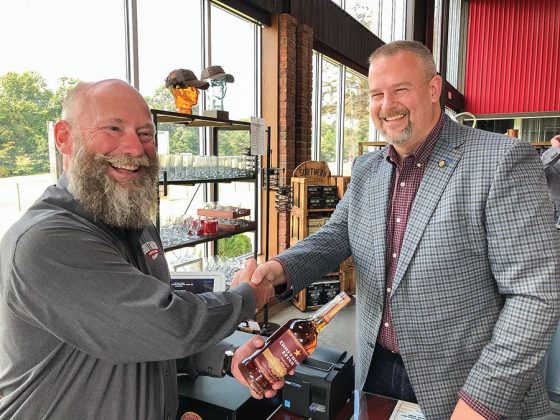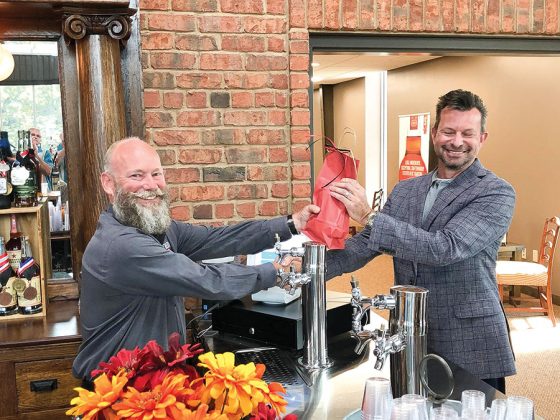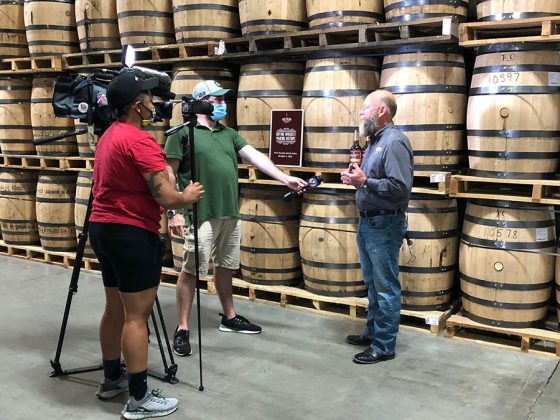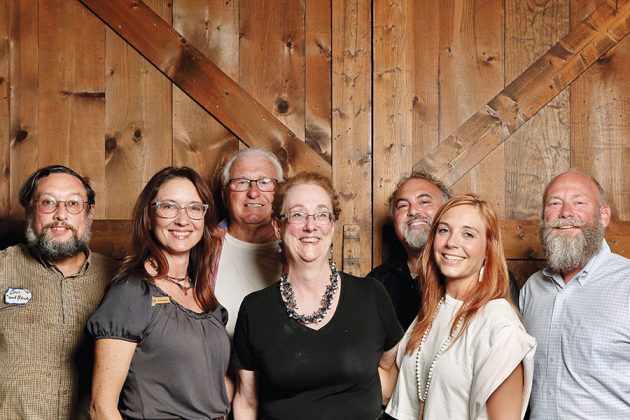For 200 years, the “wet” and “dry” struggles of Statesville, North Carolina, have been a microcosm for the greater contest between Temperance tee-teetotalers and whiskey’s grand traditionalists. The clash brought an epoch of disruption in the early 19th century, but resilient spirit-makers ultimately returned to fueling America’s moments when community and creativity thrive. Given Statesville’s out-sized role in the cultural fray, it’s fitting that a whiskey operation in this city near the Blue Ridge Mountains spearheaded forming the Distillers Association of North Carolina – a group that’s now managed to cleanse most of Prohibition’s contaminants from the state’s legal system.
October 3, 2021, saw the first Sunday liquor sale in North Carolina’s storied history. At least, the first legal one. It’s no coincidence that the bottle of wheated Paragon Bourbon was changing hands at Southern Distilling Company, one of Statesville’s signature businesses. SDC’s founders, Pete and Vienna Barger, were instrumental in rallying their colleagues to re-make the state’s regulatory atmosphere. Achieving Sunday sales was merely the latest milestone for its united distillers; and all of their successes would have been a shock the anti-saloon leagues that worked for decades to make barrels and glasses in North Carolina go dry.
It’s said that at least one 250-gallon copper-and-tin still was steaming in Statesville when the city rose up in 1789. A few decades, Temperance activists blew into town from Ohio and started an epic wrestling match between distillation artists and those possessed by a neo-puritanical fervor. In the wake of the Civil War, the dry draconians seemed to gain the upper hand when they banned all alcohol sales within a two-mile radius of Statesville. Yet the city eventually became a major rail hub for shipping whiskey out west, so much so that by 1903 it had six major rectification houses cranking out 30,000 gallons of product a week. At that point, Statesville was deemed “the Liquor Capital of the World.”
But the good times weren’t to last.
By 1908, North Carolina had enacted an early version of Prohibition. The rest of the nation followed suit in 1919. Even after the 18th Amendment was repealed in 1933, drinking culture in the Tar Heel State did not recover. A hodgepodge of carry-over restrictions continued in both law and spirit, making it illegal to even sell mixed drinks in North Carolina until the twilight of the Regan Administration.
Impacts of this legacy were still saturating the market conditions that the Bargers had stepped into in 2012. The couple originally contemplated putting a vineyard on their 5,000-acre farm in Iredell County, but began to have doubts. They found themselves looking to their college days in California for inspiration.
“We were interested in starting a family business, something that was scalable and would grow revenue out of our farm,” Pete remembered. “We’d seen what happened with California’s craft brewing scene. They were building fun businesses, but they were also building real businesses — and making real returns. These breweries were being disruptive and taking market share from the Old Guard. We were like, ‘Wow.’”
After immersing themselves in Kentucky’s whiskey culture, the Bargers set out an ambitious track of constructing a 75,000-sqaure-foot distillery in Statesville. Their vision was to produce their own whiskey label while also contracting out a host of services for up-start and smaller brands. SDC became what Pete describes as a grain-to-glass plant that includes co-packaging, barrel storage and barrel brokerage.
“We thought, ‘Let’s offer brand owners what they often can’t get elsewhere,’ things like custom mash builds, customer cooperage – just letting people really take a part in developing the product profiles that they want,” he explained. “That’s how we started the company.”
Both elements of the business began taking off, though not as robustly as they might have: North Carolina’s regulatory apparatus made that impossible. At the time, distilleries weren’t allowed to sell a single bottle directly to customers at their facilities. Spirit fans could come from near and far to have an amazing experience touring a distillery, but when they left, they were forced to go to state-controlled liquor stores if they wanted to buy the whiskey they’d learned about. That was a doubtful prospect for expanding sales. A number of distillers, including the Bargers, chose not to even open to the public if they couldn’t sell on-site.
Vienna decided to head up forming the Distillers Association of North Carolina in 2015. In the beginning, only about 12 still-masters were ready to take on the system. Some had gotten facilities off the ground, while others were in the process of building distilleries. All of them knew that their business outlook was limited unless they up-ended the status quo.
“It was kind of a life and death thing,” Peter recalled. “We knew that if we didn’t ban together and do this, we couldn’t really make a go of it in this state.”
Within a year of the distillers creating this phalanx, North Carolina lawmakers allowed them to sell one bottle per-customer, per-year. The association didn’t let up. Twelve months later, they could sell five bottles to a customer in the same window. Then, in 2019, the association successfully urged the legislature to allow for unlimited sales within their tasting rooms, as well as mixing cocktails on-site to showcase what their products could do. In a few short years, the distiller’s association had achieved an agenda that its members thought might take a decade to push through.
The 2021 Sunday sales triumph was the latest victory in a much larger war against vestiges of prohibition.
That feat was shepherded by new executive director Carol Shaw. A 35-year veteran of working in the North Carolina legislature, Shaw began helping the association get its message out. That included bringing lawmakers along on in-person tours of distilleries and stressing what massive customers spirit-producers are for Carolina farmers. The distilleries’ downstream tourism impact on surrounding restaurants, stores, hotels and gas stations was another point to drill down on.
Shaw gradually became an information conduit, too.
“One distiller who’d quit the association recently rejoined, and it was because he’d called me and said, ‘Carol, you actually answer the phone!’” Shaw recounted. “I am here when members need to know something: How does the law work? What is the rule-making process? How does a distillery list a product with the state? Who should a distiller call at the warehouse?”
Additionally, Shaw makes sure to keep up with other distillers’ associations and guilds. When she was first settling in, Shaw got advice from Amy Ciarametaro, executive director of the Virginia Distiller’s Association. That organization has been fine-tuning a publicity blitz for its members, aggregating local, statewide and national news stories about Virginia’s distilleries on a clean, handsome homepage while simultaneously providing a guide and media kit for any journalist passing through “Old Dominion.” When the Pennsylvania Distillers Guild hired that state’s former labor and industry secretary, Kathy Manderino, as its executive director, Shaw took the time to share her own insights with the new recruit.
“I really wanted to pay it forward, since Amy had helped me,” Shaw said of the exchange.
As for the Bargers, they have seen Southern Distilling Company’s contract work get so dialed in that they’re free to focus on their own whiskey. Peter says the distillers’ association helped make that possible.
“I don’t know anyone who’s perfectly happy with their state and its rules and regulations,” he observed. “So, we’re a fairly sophisticated and vocal constituent that impacts other constituents in big ways. And the legislators listen to us. In the end, there’s power in numbers.”
— Scott Thomas Anderson is a veteran reporter based in California. While his main job over the years has been covering the drug world, environmental crime, urban poverty and long-term investigations, he’s lately balanced his hard news focus with culturl writing and travel journalism, filing piece on time spent in Greece, Croatia, Spain, Italy, Ireland, Scotland and Southern France. He can be reached at standerson1@gmail.com.














